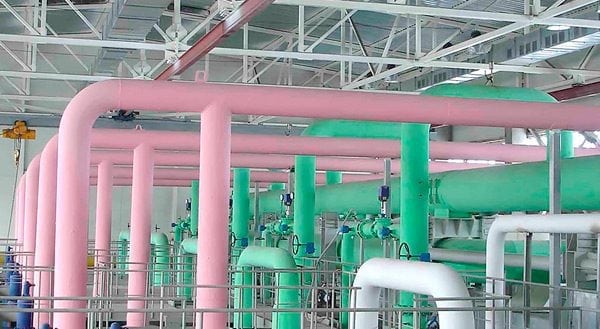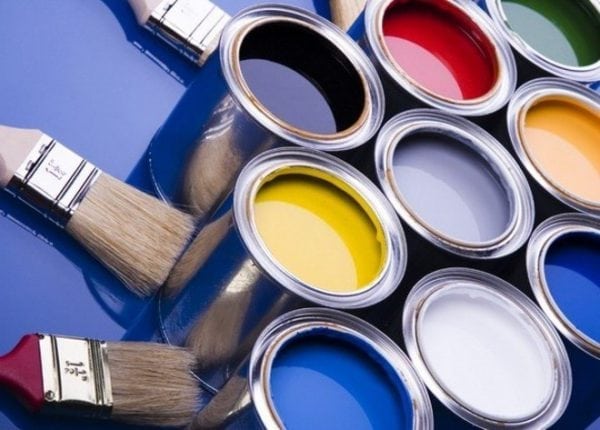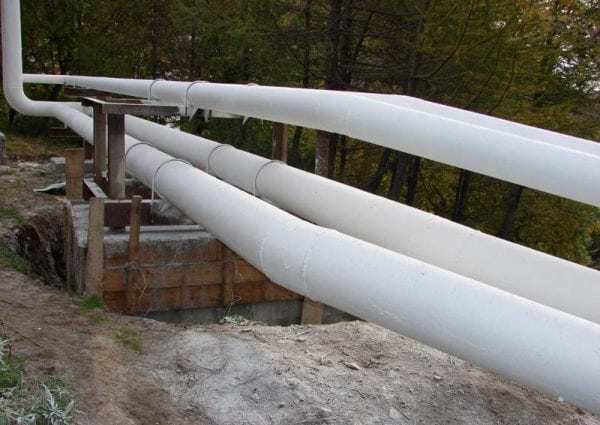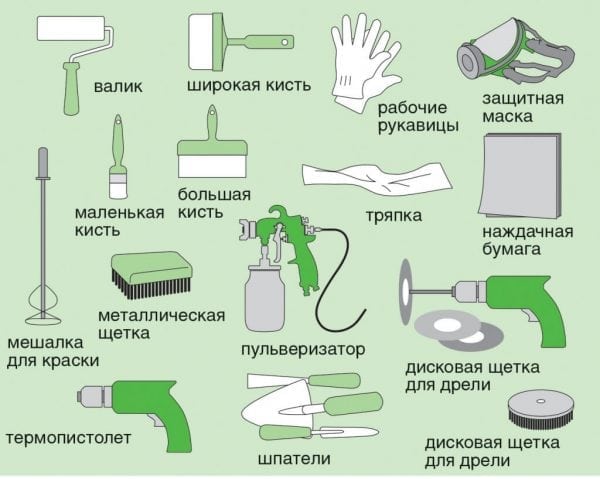What is the most common element of a communications system? Perhaps the majority, without hesitation, will name the pipe. Indeed, water supply, heat and gas pipelines and many other systems for transporting gases and liquids consist of pipes made of various materials. But for the durability of the product, protection from external conditions is necessary, and it can be ensured using paints for pipes.
- Varieties of dyes
- The choice of coloring compounds
- Material calculation
- Necessary tools and materials
- Preparatory stages
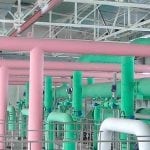
Varieties of dyes
Depending on the location of the product, the features of operation and the material of manufacture, the following compositions are used for staining:
- Acrylic The most common dyes due to their versatility and ease of use. They are based on aqueous solvents and are environmentally friendly. Depending on the purpose, they can be heat-resistant: they can even paint pipes in the bathroom without harming human health.
- Alkyd. They are made on the basis of organic solvents and are characterized by increased strength, but when they dry, an unpleasant odor persists for a long time. Able to withstand large temperature differences. Well suited as paint for heating pipes in industrial premises and for painting various pipelines inside and out.
- Oily, based on natural oils. They are rarely used due to instability to temperature extremes and a pungent odor that persists for a long time after drying.
- Epoxy - high strength, reliably protect the material from temperature effects. But when painting metal products, additional anti-corrosion treatment is required before using the dye. Toxic. Used for painting technical pipelines made of metal or polypropylene polymers.
- Powder - are applied only industrially. Powder coating of pipes is carried out in a special chamber with high pressure and temperature. Under the influence of these factors, the particles of paint are firmly fused with the surface of the product, forming a durable heat-resistant protective layer. Powder coating of pipes in the chamber is possible outside and inside, but, unfortunately, it is impossible to paint in this way with your own hands.
These are the most common and economical coloring agents used for painting various communications.
to contents ↑The choice of coloring compounds
The selection of dyes is carried out taking into account the following requirements:
- The location of the facility. For street communications, compounds with resistance to temperature extremes and with high protective qualities will be selected. In living quarters, eco-friendly acrylic enamels should be preferred.
- Type of material: for metal or for polymer structures. Each base will require its own type of paint.
- Temperature effects. If it is planned to paint heating pipes, then heat-resistant compounds should be chosen, while for sewage inside the building, the paint should have only water resistance.
Choosing a composition with these requirements in mind, it is possible to provide long-term protection of communication systems.
to contents ↑Material calculation
If you have to paint a large area of communication, it is necessary to calculate an approximate estimate of the consumption of coloring and auxiliary agents.
For serious paintwork on an industrial scale, there is a special formula for calculating estimates, taking into account all the data, including loss of solution during machine painting by spraying.
If you plan to paint yourself with a brush or roller, then the estimate is calculated according to the following principle:
- The total area of the pipeline is calculated (length is multiplied by section).
- It turns out the consumption per 1 square meter of enamel, degreaser or anti-corrosion agent.
- The result from paragraph 1 is multiplied by the consumption data specified by the manufacturer, and the required amount of consumable is obtained.
Pipe painting area from the inside it is calculated according to the same formula, but taking into account the fact that it is impossible to paint inside with a roller or brush and a sandblasting tool is required. In the calculations of expenditures should take into account all the parameters of this tool.
to contents ↑Necessary tools and materials
Before you start painting, you should prepare everything you need. To work, you will need:
- a stiff brush with a metal pile;
- a set of abrasive paper or a grinding machine with nozzles;
- keys and other tools for dismantling communication sections, if internal painting is planned;
- degreaser;
- suitable primer mix;
- painting tool: brush, roller or sandblasting spray;
- protective equipment (respirator, gloves, mask).
Having stocked everything you need before starting work, you can begin to prepare the pipeline for painting.
to contents ↑Preparatory stages
It doesn’t matter whether it is necessary to paint on the outside or inside, preparation and coloring take place on the same principle. Only with external work a different tool is used (roller or brush), and the internal surfaces are cleaned and ground using a sandblasting tool before applying the dye. Do-it-yourself preparation technology consists in following the sequence of the following steps:
- Removing contaminants. If this is not done before the main preparation, then it is possible to exfoliate the enamels. Cleaning can be done with a metal brush followed by grinding with abrasive paper or using a grinding machine, changing nozzles of different stiffness.
- The washing up. It is recommended to wash the product before further processing for a more complete cleaning and dry well.
- Degreasing. Degrease the surface to remove invisible grease stains. If this stage is neglected and not degreased, then loose adhesion with the base of the soil and the decorative layer is possible. At home, you can degrease with White Spirit and other alcohol-containing solutions. So, is it easy to degrease the surface using a roller or brush? and carefully staining the entire area of the base.
- Corrosion protection. This stage is necessary for metal substrates to protect against the development of oxidative processes. The product is applied using a roller or brush.
- Padding. Applying soil to the substrate before painting helps to increase adhesion. Priming is recommended not only on metal, but also on polymer coatings.
After the primer mixture has dried, you can begin to paint by distributing the enamel evenly with a roller or brush. It is recommended to apply at least two layers of the dye to obtain a good result (if necessary, more). Each subsequent layer is applied after the previous one has dried.
The use of enamels for coloring various communication systems inside and out allows protecting the structure from the destructive influence of external factors and giving it an attractive appearance.

